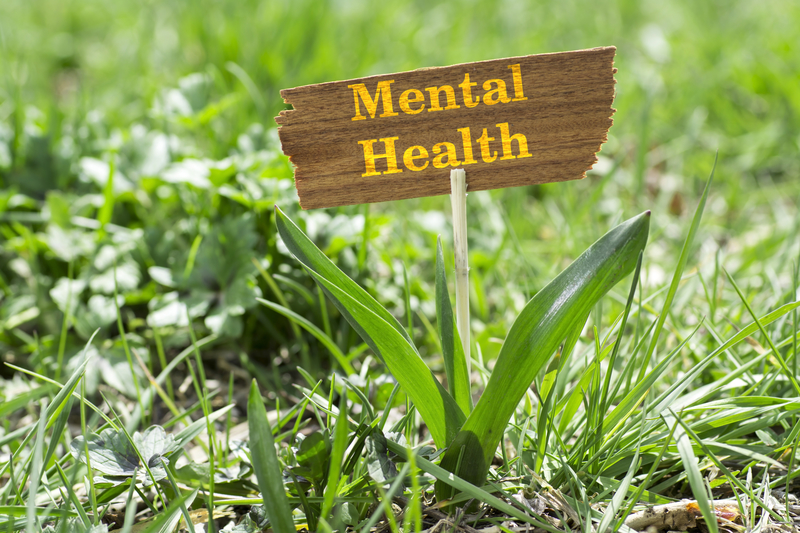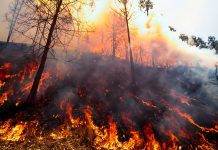Recent participatory research from the Canadian North adds nuance to global literature on gender, climate change, and mental wellbeing
Climate change has been identified as the greatest threat to human health this century.
Global Climate Change & Health Impacts
It is anticipated that the impacts will have wide-ranging consequences globally, including increased risk, frequency, and distribution of foodborne, waterborne, vectorborne, and zoonotic diseases sensitive to climate factors; challenges to food security due to food shortages and agricultural losses; increased heat stress leading to early deaths or aggressive acts; increased morbidity and mortality due to extreme weather events; increased respiratory and cardiovascular disease due to changes in air quality; and wide-ranging impacts to mental and emotional health, including strong emotional reactions and psychological trauma, increased substance abuse, and increased suicide ideation and attempts.
The Gender and Climate Change Narrative
While research examining the gendered dimensions of global climate change is relatively new, the majority of the research is emerging from the global south and is primarily focused on women working within an agricultural context. From this research, there is a generalized narrative that women are more vulnerable to climate change than men, and are likely to experience the impacts of a changing climate and environment on their health and wellbeing before men, and in a more acute and profound manner. Yet, recent research from the Canadian North is expanding this narrative.
Learning from the Circumpolar North
Inuit have been at the frontlines of global climate change, experiencing rapid changes in seasonal temperatures, leading to later freeze-up and the earlier break-up of the sea ice, and overall declining sea ice coverage. The weather has also become increasingly unpredictable, with more frequent and extreme storms. As a result, travel is more dangerous, and many Indigenous populations are finding it increasingly difficult to travel safely to hunting grounds, feed their families, and maintain subsistence livelihoods and cultural practices, all of which have serious consequences on wellbeing. Many communities are also experiencing noticeable changes in wildlife and vegetation Nunatsiavut, Labrador, Canada:
The Labrador Inuit and their ancestors have been living on and surviving from the land along the North Coast of Labrador for thousands of years. Comprised of five coastal, remote, fly-in communities – Nain, Hopedale, Postville, Makkovik, and Rigolet – Nunatsiavut has a population of 2600, approximately 4% of the Canadian Inuit population. Over 120 Inuit participated in this research over a five-year period. Data was collected through interviews, surveys, focus groups, documentary film interviews, and digital stories.
Iqaluit, Nunavut, Canada:
Inuit have been living and travelling through the lands in and around Iqaluit, the capital of the Territory of Nunavut, for thousands of years. Iqaluit is the largest Inuit community in Canada, with a population of approximately 7000 people. 42 Inuit participated in this research through interviews and participatory photography.
What Was Shared: The Gender Dimensions of Climate Change & Mental Health
From this research, all who participated, whether men or women, agreed that being able to travel safely, reliably, and regularly on the land was essential for Inuit identity, culture, livelihoods, and wellbeing. As one
Inuk explained, “People like to go out on the land to feel good. If they can’t go out on the land, they don’t feel like people.” Yet, due to gender norms and post-colonial labour division, it was primarily Inuit men who were most often travelling on the land, and who had maintained active connections to hunting, fishing, and trapping to sustain themselves, their families, their communities, and their culture.
With the changing weather patterns, the decreasing ice formation, and the fluctuating travel conditions, many men found themselves unable to get out on the land regularly, and were expressing strong emotions: anger, frustration, sadness, fear, grief, distress, stress, and depression. Many men also felt like they were losing their identities as Inuk men, as providers for their families, and as culture carriers, and were suddenly experiencing “empty time”, where they didn’t feel like productive members of their communities.
Many women also expressed these strong emotional reactions to losing time on the land, sharing that without being able to go off on the land, they didn’t “feel whole” and felt like a “piece of their body had been removed,” especially when traditionally-important activities such as berry-picking were being disrupted. Women, however, also articulated how worried they were for the males in their family when they were travelling on the land, due to safety concerns with the changing ice and weather conditions. Many women also expressed concern for the mental and emotional wellbeing of males, due to the inability to practice a land-based lifestyle, and who were now “cooped up” in the house without other options. This often led to household stress and increased family arguments and tensions, following a “he’s stressed, she’s stressed” pattern.
Implications for Policy and Practice: Adding a Gender Lens to Climate Change & Mental Health Actions
While Inuit women still expressed many ways in which climate change was impacting their mental health and wellbeing, the overall impacts of climate change on Inuit women were often mitigated based on their contemporary roles, which typically involved earning a living through wage-based employment, rather than land-based employment. In contrast, middle-aged adult males, who were active hunters and trappers, and relied on stable weather and climate conditions to travel, feed their families and support their cultural identity as Inuk men, often experienced the largest mental and emotional impacts. These findings are adding nuance and variance to understanding the ways in which the mental impacts of climate change will be enacted and experienced along gender lines within the Circumpolar North. While many global recommendations suggest focusing on women and children when designing protective and preventative policies related to climate change and health, this research indicates that in the Circumpolar North – or indeed, in areas where males primarily rely on the land for identity, wellbeing, and survival – specific policies and programming should also be targeted towards men. This is not to say that women and other populations, such as children and the elderly, should be excluded; rather, it is to highlight the importance of recognizing and exploring varied gender experiences and of expanding global narratives and recommendations, particularly related to mitigating the mental health impacts of a changing climate and environment.
Research Funding
Health Canada’s Climate Change & Health Adaptation in Northern First Nations & Inuit Communities Program | Nasivvik Centre for Inuit Health & Changing Environments | Canada Research Chairs Program | Canadian Institutes for Health Research (CIHR) | International Development Research Centre | Fonds de la recherché en santé Québec | Northern Scientific Training Program| Climate Change Adaptation Research Group | Nunatsiavut Department of Health & Social Development | Cape Breton University | McGill University
Ashlee Cunsolo Willox, PhD
Canada Research Chair in Determinants of Healthy Communities
Assistant Professor of Community Health
Departments of Nursing and Indigenous Studies
Tel: +1 902 563 1949
ashlee_cunsolowillox@cbu.ca
http://ashleecunsolowillox.ca
Anna Bunce, MA
Project Manager
Climate Change Adaptation Research Group
Tel: +1 438 880 0697
anna@annabunce.com











